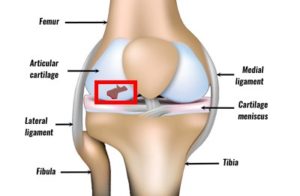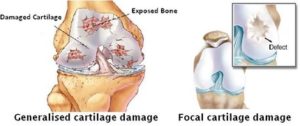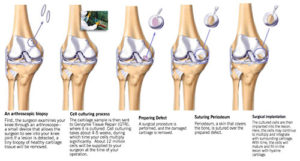What’s up ? This is THE stephane ANDRE. With my training, I’m interessted in biomechanics to avoid injuries. I read « Sport Medicine Media Guide » and I learned some good stuff.
Definition
Articular cartilage is difficult to understand because there are 3 types of cartilages in the body : articular of hyaline cartilage (covers joint surfaces), fibrocartilage (knee meniscus, vertebral disk) and elastic cartilage (outer ear). These cartilage’s types differ in their structure, elasticity and strength.
Articular cartilage is a complex element, it’s a living tissue that is on the joint’s surface. The function is to provide a low friction surface to allow the joint to withstand weight loads through the range of motion needed to perform activity of daily living. To put it simply, articular cartilage is a very thin shock absorber. It’s built in 5 distinct layers and each layer has a structural and biochemical difference.
Injury
Articular cartilage injury may be due to trauma or progressive degeneration (wear and tear). This can be mechanical destruction, a direct blow or other trauma. The healing of articular cartilage cells depends on the severity of the damage and the location of the lesion. Articular cartilage has no direct blood supply so it has very little ability to repair itself. It the lesion penetrates the bone under the cartilage, the bone provides blood in the area which improves the chances of healing.
Mechanical degeneration (wear and tear) of articular cartilage occurs with progressive loss of normal cartilage structure and function. This loss begins with the softening of the cartilage, then progresses to fragmentation. As the loss of articular cartilage lining continue, the underlying bone no longer has any protections against normal wear and tear of daily life and begins to get damaged leading to osteoarthritis.
In many cases, a patient experiences knee swelling and vague pain. At this stage, continuous physical activity isn’t possible. If a loose body is present, words such as « locking » or « catching » might be used to explain the problem. With wear and tear , the patient often experiences stiffness, decreased range of motion, joint pain and/or swelling.
Diagnostic
The physician examines the knee to look for a decrease in range of motion, pain along the joint line, swelling, fluid on the knee, abnormal alignment of the joint’s bones, and ligament or meniscal injury.
Cartilage lesions are difficult to diagnose and it’s possible that the use of magnetic resonance imaging (MRI) or arthroscopy may be necessary. Plain X- rays don’t usually diagnose articular cartilage problems but they used to rule out other abnormalities.
Treatment
Articular cartilage injury that doesn’t penetrate the bone doesn’t repair itself. A lesion that penetrates the bone can heal but the type of cartilage created is structurally unorganized and doesn’t work as well as the original cartilage.
Lesion less than 2 cm have the best prognosis and the best treatment options. These options are arthroscopic surgery using techniques to remove damaged cartilage and increase blood flow from the underlying bone (drilling, pick procedure or microfracture ).
For smaller lesion of articular cartilage surgery is not required.
For larger lesion, it’s necessary to transplant the articular cartilage from another area of the body. Talk to your doctor or specialist to have more information about the decision to have a surgical operation.
For patients with osteoarthritis, non-surgical treatment consists of physical therapy, lifestyle modification (for example reducing activity), bracing, supportive devices, oral and injection drugs (like non-steroidal inflammatory drugs, cartilage protective drugs) and medical management.
Surgical options depend on the severity of osteoarthritis and may provide a reduction in symptoms that are usually short-lived. Total osteoarthritis may relieve the symptom of advanced osteoarthritis but this usually requires a change in the lifestyle and/or level of activity of the patient.
Statistics
Based on published studies, the overall prevalence of articular cartilage injury in the knee is 36% among all athlete and 59% among asymptomatic basketball players and runners.
Subscribe to my newsletter and share this article if you think it can help someone you know.
-Steph


